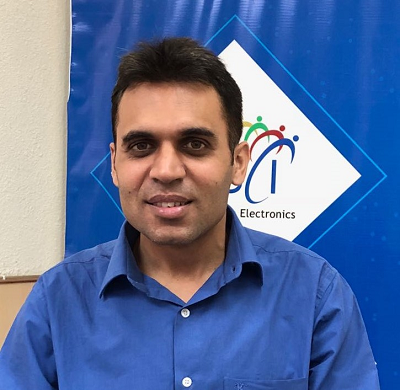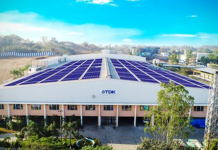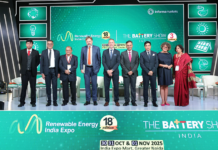
The threat of global warming and climate change has become a shared concern across the world. In response, India has set an ambitious target of generating over 600 gigawatts of renewable energy by 2032. While much attention has been given to increasing power generation capacity, the greater challenge lies in ensuring that electricity reaches the remotest corners of the country. And for that, the expansion of transmission lines is indispensable. Without transmission towers and lines, electricity supply is simply impossible. Transmission infrastructure, often invisible to the public eye, is truly the lifeline of modern India.
The Backbone of India’s Power Supply
India’s energy ecosystem rests on three critical pillars: generation, transmission, and distribution. Transmission networks carry electricity generated thousands of kilometers away at ultra-high voltages (220, 400, 765 kV and ±800 kV HVDC) to consumers across the country.
As of early 2025, India has built 4.92 lakh circuit kilometers (ckm) of transmission lines at 220 kV and above, with a transformation capacity of 1,269 GVA—one of the largest synchronized grids in the world. The unified national grid can now handle power exchanges of up to 118,740 MW. The impact is visible: the energy deficit of 4.2% in 2014 has dropped to just 0.1% in 2025, making India a net exporter of power.
Yet, progress has not been without obstacles. In 2024–25, only 8,830 ckm of transmission lines were added—the lowest in a decade. The Right-of-Way (RoW) issue remains the single biggest bottleneck. Land acquisition often faces local resistance due to limited public awareness, with many still believing compensation is provided under outdated rules, as well as delays in securing environmental clearances. Recognizing this, the government amended the RoW policy in June 2024 and issued fresh guidelines in March 2025, ensuring better compensation for landowners and greater transparency in the process.
Why Vision 2032 Matters
According to the National Electricity Plan (NEP) – Transmission, 2024, India aims to expand its transmission network to 6.48 lakh ckm, enhance transformation capacity to 23.45 lakh MVA, and increase HVDC capacity to 66,750 MW by 2032. Achieving these targets will require an estimated investment of ₹9 lakh crore in transmission infrastructure.
Policy-level reforms have played a crucial role in making this sector investment-friendly: faster approvals, public-private partnership models, and strong state collaboration have paved the way. Private investment has brought in technology, efficiency, and cost-effectiveness, and its role will only grow with the rise of renewable integration and digital solutions.
Powering Economic Growth
Transmission is not just about energy—it is about enabling economic development. Every industry, startup, and infrastructure project depends on reliable electricity. From the Delhi-Mumbai Industrial Corridor to technology parks in Pune and Hyderabad, transmission lines are fueling growth.
By February 2025, the Inter-State Transmission System (ISTS) has connected the entire country with a network of 2.13 lakh ckm. Importantly, transmission infrastructure is not limited to urban centers—it has also accelerated rural development. Under the Saubhagya scheme, millions of households received electricity thanks to the backbone provided by transmission lines. Villages in Rajasthan, Madhya Pradesh, Chhattisgarh, and Assam have seen classrooms go digital, health centers adopt modern equipment, and farmlands powered with pumps and motors. In rural India, electricity is a true game-changer.
The Real Power Behind Progress
Transmission lines may not often make headlines, but they are the silent force powering India’s transformation. They not only bring light to homes but also fuel the digital revolution, smart cities, industrial growth, and rural aspirations.
As India marches towards becoming a $5 trillion economy, ensuring universal access to electricity is non-negotiable. Every citizen—irrespective of geography, caste, or background—must have access to reliable power. Transmission expansion is not just about wires and towers; it is about energizing equality, opportunity, and ambition.
The steel towers and endless lines stretching across our landscapes are more than infrastructure—they are the very threads connecting India’s future. By 2032, if India delivers on its transmission vision, it will not only power industries and homes but also the dreams of its people. That is the true strength behind a brighter, more developed India.
Technology and Innovation in Transmission
Looking ahead, India’s transmission sector will rely heavily on technology innovation. Digital substations, advanced monitoring systems, and predictive analytics will make grids smarter and more resilient. With renewable energy sources like solar and wind being intermittent, the grid of the future must adapt quickly to fluctuating supply and demand. Artificial intelligence, remote sensing, and satellite-based monitoring can help anticipate faults, improve load management, and prevent outages. Another frontier is underground and undersea transmission lines, which can minimize land acquisition challenges and ensure reliable power supply across tough terrains. India’s experience in building high-voltage direct current (HVDC) corridors is already a global case study, and scaling this further will strengthen its position as a leader in advanced transmission engineering.
Transmission as a Global Benchmark
India’s achievements in building one of the world’s largest synchronized grids provide valuable lessons for emerging economies. The ability to integrate renewables at scale while ensuring grid stability is a model other nations are keen to study. With the right mix of investment, innovation, and policy, India has the opportunity not just to meet its domestic needs but also to emerge as a global leader in green energy transmission solutions.
For more information visit Electronics Sector Council of India
















